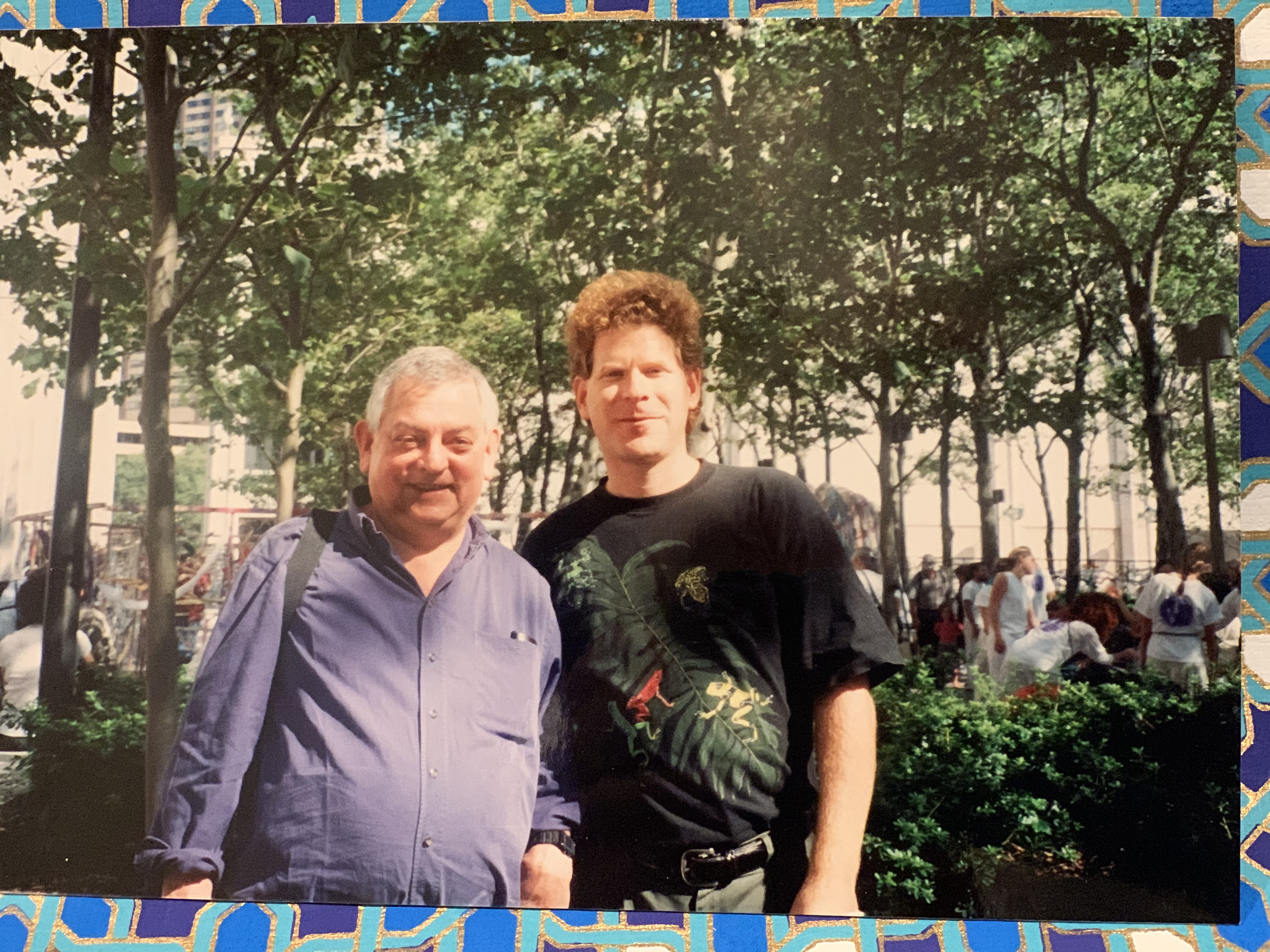For Joel and His Teacher

Joel Chadabe and Michael Robinson outdoors at Lincoln Center in Manhattan
Photograph by Francoise Chadabe
While an undergraduate, I took a summer job as a midnight guard at Jones Beach on Long Island. My duties basically consisted of not allowing any cars to enter a series of parking lots between 11 PM and 7 AM. It certainly was tedious, sitting in my car alone, listening to the radio. However, one morning, as dawn was breaking, the music I was listening to miraculously coalesced with the complex counterpoint of nature uttered by varying bird, wind and ocean sounds. It was uncanny the degree to which both musics, that from the radio and that from nature, appeared to emanate from the same creative source. I became intensely curious to learn who the composer was during this sonic epiphany, and was stunned when Elliott Carter’s name was announced at the conclusion of the work because I had read that he was a cold, cerebral composer lacking in musical expressiveness. Similarly, some years after that portal, I’ll never forget the thrill of hearing new forms of inspired and original musical color and articulation coming from an unknown source, again on the radio. This time it turned out to be the computer music of Joel Chadabe, and it opened up an exciting, little explored musical domain. My recollection is that the composition by Elliott Carter I heard on the radio at Jones Beach was likely his Concerto for Orchestra (1969). At first glance, not having listened to it more than once or twice since then, connections with a work favored by Joel, Mian Ki Malhar (2003), spring to mind.
Finding the likely music by Joel Chadabe described in the second paragraph above has been more elusive. Flowers has some of the qualities mentioned, even if I'm not certain an actual computer was used. Welsh Witch, composed in 1986, from Hamoa (1995), and named for Stevie Nicks, reveals some linkages, as do the opening ostinati in The Forest of Brinda from Luminous Realms (1998).
Joel was also especially fond of Chinese Legend (1997), telling me it deserved to be heard far and wide. Ravi Shankar, Lee Konitz, Nazir Ali Jairazbhoy and Martin Perlich were also taken by this recording. Electronic Music enthused about the album, including me on a list of twenty-one artists from diverse genres who use music technology.
Joel promoted my music endlessly at CDeMUSIC alongside the most well known names in new-music, continuing that support at New Music World and other ventures. He asked me to write liner notes for my early albums, and this evolved into a wide range of writings touching myriad music subjects. Noticing how the above selections present either struck or plucked melodic voices, here are some albums featured by CDeMUSIC using various woodwind, bowed and brass timbres, including Nagamani, Puriya Dhanashri, Monsoon Clouds, Snow Leopard Meadow and Luminous Realms. Elliott Carter, who Joel studied composition with at Yale, did reply to a letter I sent him while working at Patelson's, but that correspondence seems to have been lost. Some may wonder how it came to be that Joel admired my music so much given how we used different software and hardware, and had different approaches to composition and performance. I suspect that one underlying commonality is a great love of jazz transcending all. Another reason would echo Morton Feldman's belief that strong divergences are essential for music to be real. I would have liked to have asked Joel how he first became interested in music, and many more things. We only met in person once as pictured above, but his purposeful, nourishing spirit is with me all the time like the morning sun. - Michael Robinson, May 2021, Los Angeles
© 2021 Michael Robinson All rights reserved
Michael Robinson is a Los Angeles-based composer, programmer, pianist and musicologist. His 199 albums include 152 albums for meruvina and 47 albums of piano improvisations. Robinson has been a lecturer at UCLA, Bard College and California State University Long Beach and Dominguez Hills.
|